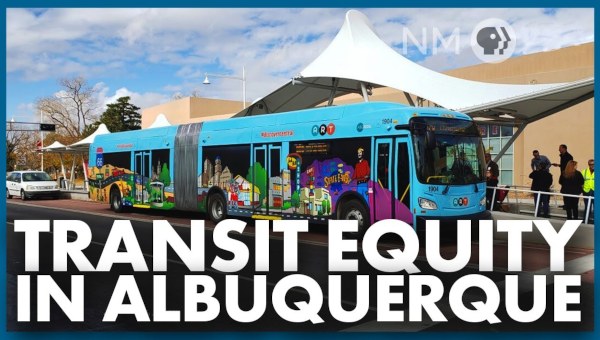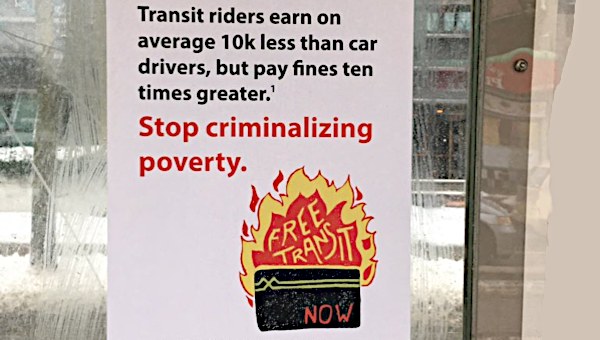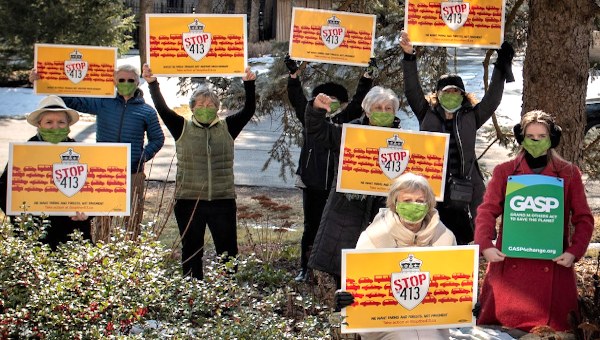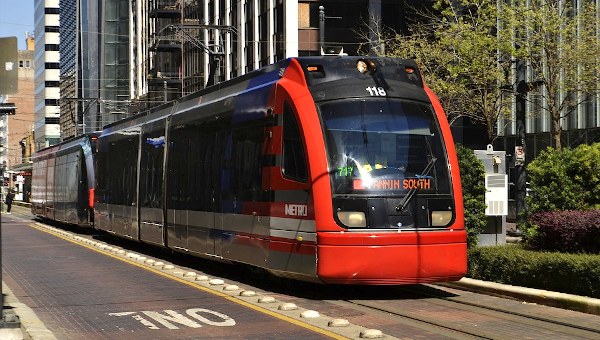Free Transit is in Town, For Now
Even before the current pandemic, the idea of free transit had arrived on the mainstream political scene in Toronto as well as in other parts of Canada.
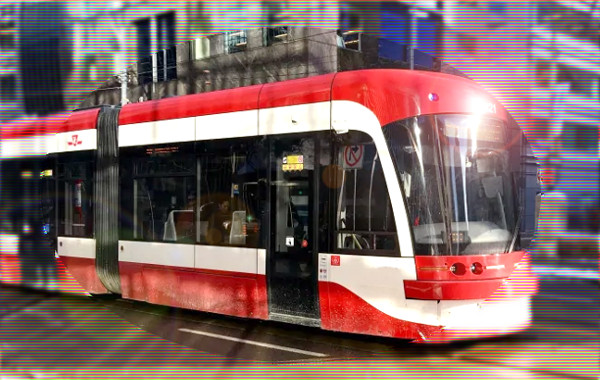
In 2018, Saron Gebresellassi included fare-free transit as a plank in her campaign for Toronto mayor. Since then, some Liberal politicians have raised the issue. In 2019, CUPE Local 2 (representing electrical workers at the Toronto Transit Commission) picked free transit as a demand around which to mobilize against Ontario Premier Doug Ford (CUPE 2, 2019). In early 2020, the Amalgamated Transit Union Canada published an article on its website calling for gradual implementation of fare-free transit (Burt-D’Agnillo, 2020). Meanwhile, spontaneous turnstile jumping became more frequent even in Toronto, not a city known for spontaneous citizen action.
Why this new wave of popularity for the idea of free transit?
- Transit organizing. In Toronto, Free Transit Toronto had been advocating for fare freedom throughout the 2010s (Rosenfeld, 2018). In the last two years, similar groups emerged elsewhere in Canada, for example, Free Transit Ottawa and Free Transit Edmonton. In the same period, there has been another wave of free transit initiatives around the world, either in the form of free transit policies (recently in Dunkirk, Luxembourg, and Kansas City, for example), or in the form of mass movements sparked by the cost of transit fares (in Chile in 2019). As a result, a world-wide constellation of free transit movements has become more visible than ever. In Canada, organizers now consider a nation-wide movement for free transit possible.
- Rider frustration. In Toronto, transit riders’ frustration reached a new level in 2019 and 2020. While service continued to deteriorate and crowding on buses, streetcars and subways kept intensifying, fares were increased yet again. Fare policing was ramped up, more fare inspectors were hired, and publicity campaigns against fare evasion were mounted. But many riders refused to be seen as latent criminals by the Toronto Transit Commission’s (TTC) loud anti-evasion campaign. Crucially, people most targeted by transit police – those racialized as non-white, including Black Torontonians – were more than ever tired of risking their lives due to aggressive, racist fare enforcement.
- The climate crisis and political consciousness. The climate strikes in late 2019 mobilized new masses of young people. Many among them came to recognize the contradiction between racialized capitalism and the future of the planet. Some also realized that climate justice is impossible in a world dominated by fossil-fueled transportation. Finally, the idea of universally accessible, equitable, and generous public services is just plain common sense after a generation of failed ‘market-based’ experiments, including, in public transit, user-fee increases and public-private partnerships for fare collection systems and new projects.
As a result of these developments, in early 2020, talk about free transit in Toronto became loud enough to provoke defensive critiques from established corners such as the ruling-class Globe and Mail (whose columnist Marcus Gee added to the witch hunt against fare evaders in February 2020) and the left-liberal weekly NOW Magazine (which has a reasonably progressive history of reporting on transit, cycling, and pedestrian issues). In early March, both papers responded to citizens who criticized fare policing and asked for fare-free transit while making deputations at the TTC Board meeting on February 25.
On March 6, the Globe and Mail argued that free transit is not the right answer to the “plague [sic] of people not paying their fares on the TTC.” Why? The property tax base can’t bear the $1.25-billion subsidy increase to replace the TTC fare. And, “absent major taxpayer funds,” the revenue loss would undermine efforts to expand service and undertake any expansion project (2020). The day before the Globe editorial, long-standing transit advocate Steve Munro argued in NOW Magazine that fare freedom will not solve “the current model of customer service” on the TTC (2020). It would be too much for Toronto’s municipal property tax base and a further strain on a system in desperate need of service and system expansion. Moreover, it would fail to get provincial support while other transit systems continue to collect fares. Munro, himself singularly focused on public transit in Toronto for a long time, went on to pit transit against other public services, suggesting that free transit would crowd out other worthy demands such as calls for free public housing and free childcare.
In Defense of Free Transit
At one level, the critics were right. Toronto is neither Luxembourg nor Kansas City. Fare freedom is an ambitious proposition in large and sprawling urban regions like ours, where transit subsidies are comparatively small and the need for transit expansion is huge. Clearly, this forces us to think beyond the City of Toronto and consider Toronto’s mega-region, the so-called Greater Golden Horseshoe (GGH). The GGH circles Lake Ontario from the US border at Niagara to Northumberland County in the east, and from downtown Toronto to Georgian Bay in the north. Replacing fares not just in the TTC but in the systems run by Metrolinx (above all, GO Transit) and other municipalities in the GGH would significantly add to the cost of replacing fares collected by the TTC, which is by far the biggest transit sub-system in this mega-region. The fares that the TTC and Metrolinx expected to collect in 2020 amount to $1.874-billion ($1,246-million for the TTC, $628-million for Metrolinx). Fare revenues from other transit operations across the GGH amount to another $450-million.1 This would make the GGH’s total fare box about $2.3-billion.
It may be possible to make smaller local operations fare free through the existing municipal tax base (usually dominated by a range of property taxes). In fact, starting small could build momentum to make the bigger systems free. But the local tax base is clearly not sufficient to make transit fare free in the City of Toronto or across the region. Given the size of the GGH, however, provincial and federal intervention is not only necessary but easy to justify. The GGH houses 9 million people, a quarter of Canada’s population and almost two-thirds of Ontario’s, so a public expenditure of about $2.3-billion/year to replace existing fare revenue is far from exorbitant. Of the $4.3-billion in fares collected across Canada in 2018, transit authorities in the GGH took more than half according to the Canadian Urban Transit Association (CUTA, 2020). Toronto and the GGH exemplify clearly that free local and regional transit can become the building blocks of a new federal-provincial transit strategy that would also finance and extend inter-regional transit, including a much-expanded VIA Rail system and desperately needed bus networks much beyond the major metropolitan zones of the country.
Thinking big is crucial if fare freedom is to become free transit for most. Without fares, transit infrastructure must expand to meet additional demand and to turn transit into a viable alternative for all those who use cars for most trips (the vast majority of workers in the larger Toronto region and across the country).2 The additional capital investments and operating dollars necessary to run new projects require rethinking the nature of public expenditure on transportation at provincial and federal scales. In one sense, this is a matter of priorities, forcing us to replace the socially and environmentally regressive tax and infrastructure subsidies to motorized transportation with an equally ambitious but systemically different pro-transit and pro-rail (as well as pro-pedestrian and pro-cycling) orientation to mobility. In another sense, ramping up transit at all scales would require broadening and deepening the tax base. The burden of public finance needs to be shifted massively onto capital, which is a direct beneficiary of transit expansion. Taxation should thus focus on profits, rents, and payroll (as well as high incomes and luxury consumption).3 This is important for not only transit but also other public services, from social housing to childcare and public health.
The critics were also right in suspecting that asking for fare freedom may be contagious. Demands for free transit in Toronto, Oshawa, Edmonton, and Ottawa might generate such demands elsewhere. And calls for fare freedom may yield other calls for freedom, with regards to mobility and much beyond. This is exactly the point! Demanding fare freedom raises the question: why not make other vital services (from public housing to childcare and post-secondary education) free? Also: why not consider public transit a genuine public space free from harassment, from segregation, from racialized policing? Why not put public services such as transit at the centre of economic development strategies that are both egalitarian and ecologically sustainable? Why not introduce free public services to reorganize the way in which we plan our towns, our cities, our lives? Why, in fact, should we pit one just and green demand against another? Why not work together to build a broader vision for a different city, a different world, in which human and other lives are affirmed and enriched? If free transit is one entry point to start building a new world, why not bring mobilizations for transit and mobility into conversation instead of competition with other critical political campaigns?
To ask these questions properly is not possible if, as the Globe and Mail and NOW Magazine want, we treat ‘free transit’ as a simple policy proposition confined to the constraints of state intervention as we know it. Instead, free transit must be viewed as a dynamic proposition that forces us to link short-term interventions to longer-term change, to recast the relationship between different scales of the state, even to rethink the very nature of planning, politics, and the state. To consider free transit as a static policy option would accept the zero-sum logic imposed on us by the (never colour-blind, always gendered) realities of austerity, downloading and inter-municipal competition that since the 1980s have made any substantial demand look fiscally impossible. Asking bold questions about free transit is also not possible if transportation planning is considered in isolation, inevitably bound to the existing parameters of transit policy and daily mobility practice. With respect to regional planning, these parameters are guaranteed to sustain the deadlock of never-ending motorized employment sprawl. Transportation planners admit as much. In no scenario identified in the current provincial plan for the Toronto region would transportation patterns change much by 2041, leaving transit’s share of peak-time commuting travel at very low levels, between 14% and 16% (Metrolinx, 2016, 145). In the current climate crisis, we have no choice but to question these non-choices and the constraints that make them seem inevitable. Demands for genuinely free transit can help us pry open the seemingly iron-clad necessities embedded in the state and in urban life.
Free Transit and the Pandemic
When restrictive measures to contain the Covid-19 pandemic were ramped up in Canada in March 2020, it seemed as if free transit and other ambitious ideas would suffer a setback. Very quickly, however, free transit became declared public policy, or, as in Toronto, effective practice in cities and towns across Canada (and in other countries). From Edmonton to Toronto, public health authorities, transit advocates and transit workers combined to push transit authorities to stop collecting fares, ensure proper health protocols for drivers and maintenance workers, and selectively increase service to guarantee mobility for all (particularly low-income and transit-dependent workers) while avoiding crowding on whichever routes ridership had not already dropped precipitously (TTC Riders, 2020; Spurr, 2020a-b; Free Transit Ottawa, Free Transit Edmonton). As a result, fare freedom has become more self-evident than ever for many, including those who have a history of arguing for generous, public, just, and expanded public transit.4
Can arguments for free public transit stick even after the pandemic? The answer will surely depend in part on the capacity of riders, workers, and advocates to build transit movements that can, together with other movements, shift the balance of political forces so as to make proposals for structural transformation politically realistic. As the pandemic and the rapidly deepening worldwide economic crisis show, we are again at a crucial political crossroads, as Naomi Klein has rightfully reminded us (2020). In fact, one may suggest, adapting terminology from Antonio Gramsci, that in some comparative contexts, the current situation resembles a crisis of rule that is intensified by the various economic, social, and ecological contradictions revealed and created by the pandemic. Whatever the case, we are living in times of great danger as well as yet unexplored opportunity for emancipatory forces (Levenson, 2020).
On the one hand, states of emergency provide ample opportunities for capital and the far right to usurp power: governing by decree without limitation (Hungary), ramping up existing racial profiling by enforcing confinement measures (France), encouraging fascist mob violence (India, USA), pressure to make national border closures permanent (Europe, USA), opening collective agreements, suspending environmental regulations, speeding up resource extraction projects and undermining indigenous claims to land and sovereignty (North America). In addition, the economic consequences of the pandemic, a sharp slump combined with massive expansion of public debt, could provide a weapon to further discipline emancipatory demands, deepen social inequalities of all kind, reinforce imperial relationships between North and South, and deconstruct the public services that are worth defending. This includes public transit authorities, which are operating at low capacities and have scaled back service in various ways in various places (Béziat, 2020). In the US, some operators paint a grim picture of the future of transit (and mobility for those who depend most on it) once federal emergency dollars are used up (Badger, 2020; Hu and Goldbaum 2020). Some of these crises scenarios are also discussed publicly in Canada, from Vancouver to Toronto (Spurr, 2020c; Saltman, 2020). Collectively, public transit authorities, which are losing essentially all fare revenues as well as most riders, are still waiting for the rescue package they have requested from Ottawa (CUTA, 2020).
On the other hand, the crisis has shown, once again, that capitalism’s survival depends on collective interventions (bailouts, nationalizations, stimulus packages, proactive industrial policies) that capitalists are not usually willing to concede in ‘normal’ times. This dependency creates an opening for those who realize that today, the point is not to ‘save the economy’ in order to repeat what happened after the 2008 crisis: bail-out of financial markets and major corporations in order to further concentrate the power of capital and kickstart the next inevitably crisis-prone pseudo-recovery. Instead, the point is to ‘plan its transformation’, doing what capitalist states and markets cannot: develop long-term strategies of economic, social and ecological reconstruction that may make it possible to confront health and climate crises in egalitarian and democratic fashion.5 Free and expanded public services are central to such red-green strategies. They force us to socialize private enterprises, reshuffle public finance, democratize planning and shift investment to combine socially and environmentally useful forms of production and consumption. As Magali Giovannangeli, former mayor of Aubagne, France, and Jean-Louis Sagot-Duvauroux have claimed (2012), public transit at all scales is central to such a red and green future provided we consider it as a public utility guaranteeing just mobilities and pushing back against the deadly commodification of everything. •
Sources:
- Amardeep Kaur Amar and Cheryl Teelucksingh (2015) “Environmental Justice, Transit Equity and the Place for Immigrants in Toronto.” Canadian Journal of Urban Research 24.2: 43-63.
- Attac France, “Coronavirus: une révolution écologique et sociale pour construire le monde d’après.”
- Awami Workers Party (2020) “A People’s Response to the Corona Virus.”
- Emily Badger (2020) “Transit has been battered by Coronavirus. What comes next, may be worst,” New York Times April 9.
- Eric Béziat (2020) “Coronavirus: comment le transport public s’adapte partout dans le monde,” Le Monde March 24.
- Bhattacharya, Tithi (2020) “Social Reproduction Theory and Why we need it to make sense of the corona virus crisis.”
- Madeleine Burt-D’Agnillo, Madeleine (2020) Free Public Transit in Canada?, January 23.
- Canadian Centre for Policy Alternatives (2020) New Decade, New Deal: Alternative Federal Budget 2020.
- CUTA (Canadian Urban Transit Association) (2020) “Public transit needs federal support now,” March 31.
- City of Halifax (2020) “Response to Covid-19,” March 17.
- Committee for the Abolition of Illegitimate Debt (2020) Call of the indigenous peoples, afro-descendants and peoples’ organizations of Latin America, April 3.
- CUPE 2 (2019) “TTC electrical workers call for FREE PUBLIC TRANSIT and a campaign of mass strikes and protests to BRING DOWN DOUG FORD.”
- Radhika Desai (2020) “The Unexpected Reckoning: Coronavirus and Capitalism,” Canadian Dimension.
- Durand, Cédric (2020) «L’enjeu de cette crise est de planifier la mutation de l’économie», Médiapart April 3.
- “Durham Region Transit will be Free Starting Thursday” (2020) durhamradionews.com March 18.
- Free Transit Edmonton.
- Free Transit Ottawa.
- Marcus Gee (2020) “Let’s not make excuses for TTC fare cheats,” Globe and Mail February 9.
- Magali Giovannangeli and Jean-Louis Sagot-Duvauroux (2012) Voyageurs sans tickets: Liberté, Egalité, Gratuité (Vauvert: Au Diable Vauvert).
- Globe and Mail (2020) “Should transit be free? The cost will be higher than you think,” March 6.
- Guelph Today (2020) “Guelph Transit will be free until April 14, but reduced service” March 17 guelphtoday.com
- Adam Hanieh (2020) “This is a Global Pandemic – Let’s Treat it as Such.”
- Winnie Hu and Christina Goldbaum (2020) “The worst case scenario: New York subway faces its biggest crisis,” New York Times.
- International Assembly of Peoples and the Tricontinental: Institute of Social Research (2020) “In Light of the Global Pandemic, Focus Attention on the People” thetricontinental.org
- Naomi Klein (2020) “Coronavirus Capitalism, and How to Beat it,” theintercept.com
- Razmig Keucheyan (2020) «La sobriété ne peut s’organiser que collectivement» Médiapart March 28.
- The Leap (2020) “The People’s Bailout.”
- Zachary Levenson (2020) “An organic crisis is upon us: when Gramsci goes viral,” Spectre Journal.
- Kathleen Lévesque (2020) “Transport en autobus à Montréal: ‘sur l’honneur’,” March 17.
- Metrolinx (2019) 2019-2020 Metrolinx Business Plan.
- Metrolinx (2016) 2041 Regional Transportation Plan.
- Steve Munro (2020) “Taken for a Ride” NOW Magazine March 5, 8-11.
- Daryl Newcombe (2020) “LTC halting fare collection, allowing riders to board at rear doors,” CTV News London, March 19.
- NOW Magazine (2020) “Fare warning: Free Transit may be an Idea whose time has come in Toronto, but at what cost?” March 5.
- Herman Rosenfeld (2018) “Toronto: Challenging the Impossible,” in Judith Delheim and Jason Prince eds., Free Public Transit and Why we Don’t Pay for Elevators (Montreal: Black Rose) 151-168.
- Rosa Luxemburg Stiftung.
- Jennifer Saltman (2020) “Pandemic forces Translink at ‘deconstructing’ transit system,” Vancouver Sun April 14.
- Jane Slaughter (2020) “Detroit Bus Drivers Win Protections against Virus with Strike” The Bullet March 21.
- Southern African People’s Solidarity Network (SAPSN) (2020) “COVID-19 pandemic: Statement by the Southern African People’s Solidarity Network.”
- Ben Spurr (2020a) “Transit Advocates call for free TTC Service,” Toronto Star March 18.
- Ben Spurr (2020b) “Who’s still crowding into buses? Many are Toronto’s working poor,” Toronto Star April 8.
- Ben Spurr (2020c) “TTC CEO says Covid crisis could force layoffs, more transit service cuts,” Toronto Star April 20.
- Statistics Canada (2017) National Household Survey: Commuting to Work.
- Eric Toussaint (2020) “No, the coronavirus is not responsible for the fall of stock prices.”
- Toronto Transit Commission (2019) “2020 TTC and Wheel Trans Operating Budgets.”
- TTC Riders (2020) “Public Transit and Covid-19,” March 16.
Thanks very much to Eric Mills, Herman Rosenfeld, Karen Wirsig, and Taraneh Zarin for their editorial corrections and suggestions.
Endnotes
- Calculations are based on municipal budget documents. They are approximate. Budget figures are available for most towns, cities, and regions, but they do not always separate fares from other, typically much smaller, transit revenues (such as advertising). In the GGH, mid-sized transit systems collect fare box revenues from $30-million to $100-million/year: York Region, My-Way (Mississauga), Brampton, Hamilton, Grand River (Waterloo region), and Durham. Small operations collect from $1-million up to $15-million: Oakville, Burlington, Milton, Guelph, Peterborough, Orangeville, Barrie, St. Catharines, Niagara Region, Brantford and Orillia.
- In Canada and in the Toronto region, commuting by public transit has slightly increased over the last generation but remains very low. According to Statistics Canada (2017), the proportion of people using transit to work in 2016 was 12.4% (up from 10.1% in 1996). In the Census Metropolitan Area (CMA) of Toronto (which is slightly smaller than the Greater Toronto Area and excludes Hamilton), public transit use for work trips was 24.3% in 2016 (compared to 22% in 1996). This proportion is slightly higher than it is in the Vancouver and Montreal CMAs. According to the Transportation Tomorrow Survey from 2016, the share of the car in all daily trips across the Greater Toronto Area plus Hamilton, the central area of the GGH, is overwhelming except for (1) trips within downtown Toronto (where it is clearly minoritarian compared to walking, cycling and transit) and (2) for trips between central Toronto, on the one hand, and the suburban areas of Toronto and the rest of the region, on the other. In turn, the share of public transit in total trips is between 10% and 20% for the GTAH as a whole and below 10% for trips between Toronto suburbs and the rest of the region as well as for trips between municipalities outside the City of Toronto (Metrolinx, 2106, 176).
Car and transit-dependency are socially differentiated along lines of class, race, migration status and age, but in a complex way. Given the overwhelming weight of the car, car use cuts across social divides (it has ceased to be a privilege of the bourgeoisie and the middle class a very long time ago). But car travel and car ownership generally decrease with income, are clearly lower for women, and are least pronounced among low-income workers (a disproportionate number of whom are immigrants and people racialized as non-white (Statistics Canada, 2017, Metrolinx, 2016, 174, 178-179; Amar and Teelucksingh, 2015). In turn, the class and race character of transit varies. The working-class nature of transit is starkest on suburban bus lines of the TTC (which connect to social spaces inhabited mostly by non-white and low-income segments of the working class) as well as on the local buses in the smaller suburban transit systems (where local transit use is largely restricted to the minority of people without access to a car (e.g., low-income workers and students). Transit use is more mixed socially (combining various working and middle-class segments) on the GO regional transit lines and the subways, streetcars and buses in central Toronto. - For an initial set of proposals along these lines, see the Canadian Centre for Policy Alternatives (2020), pp 34-40.
- In Toronto, this became clear during an on-line panel discussion convened by Toronto’s TTC Riders on March 29. The panel included student activist Kandeel Imran, anti-racist writer Desmond Cole, Scarborough transit advocate Jamaal Myers, Amalgamated Transit Union leader Carlos Santos, and Leap representative James Hutt.
- The formulation is Cédric Durand’s (2020). See also Tousssaint (2020), Hanieh (2020), Desai (2020), Bhattacharya (2020), Keucheyan (2020). In the last month, various organizations have published proposals for red-green and internationalist responses to the current crises that also point toward a post-capitalist future for the planet. See, for example, the International Assembly of Peoples and the Tricontinental (2020), the Committee for the Abolition of Illegitimate Debt (2020), the Southern African People’s Solidarity Network (2020), the Awami Workers Party (2020), Attac France (2020), and the Leap (2020).


